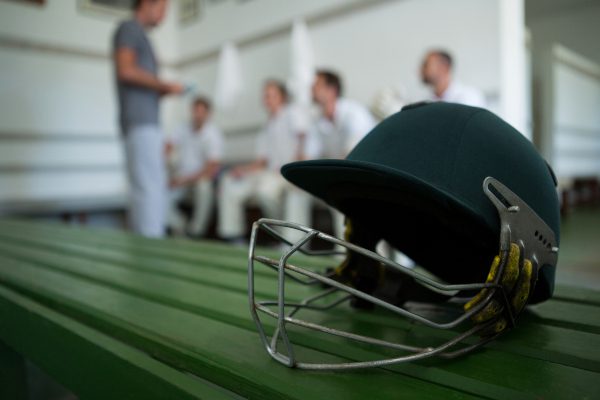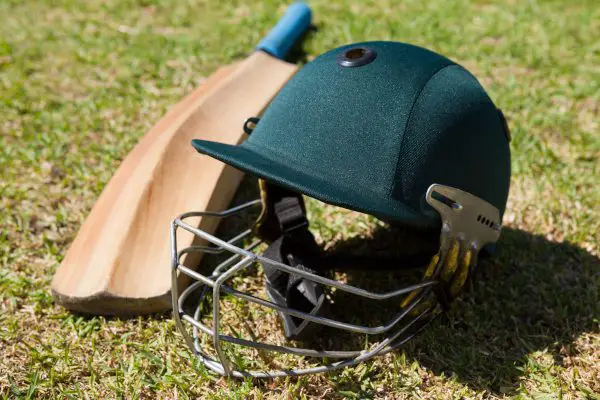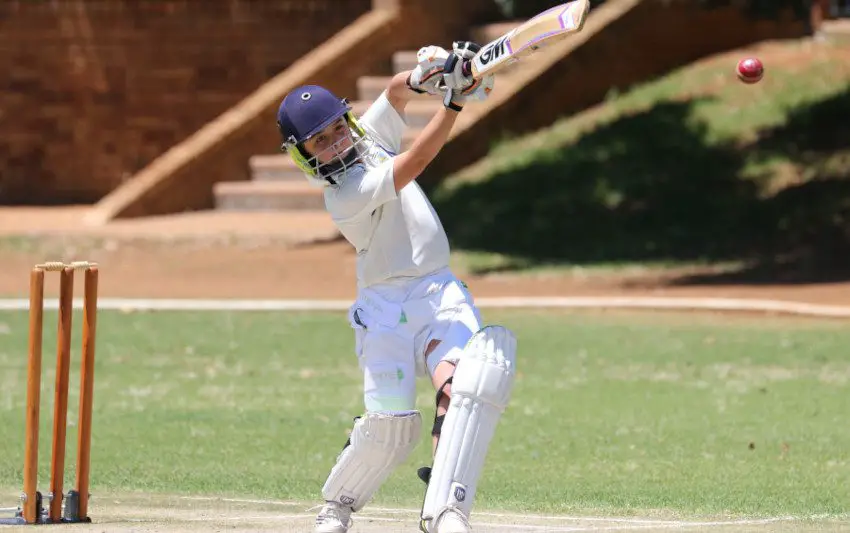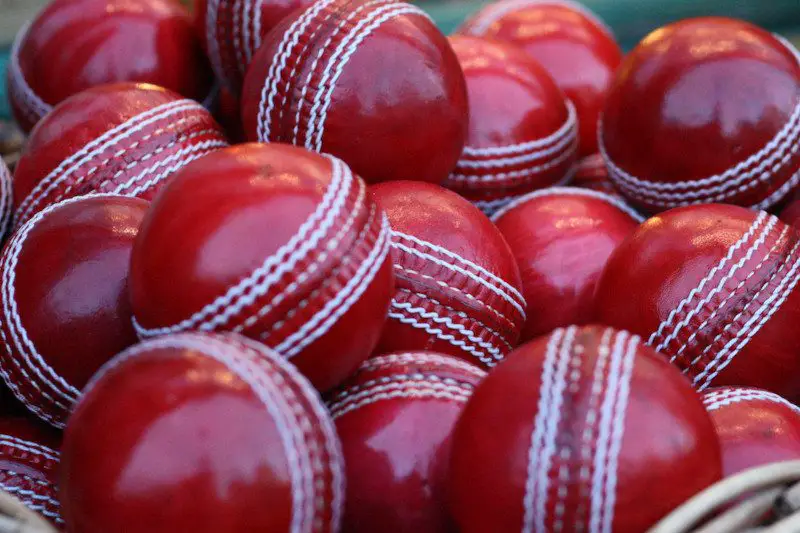Table of Contents
Cricket helmets have the primary function of preventing serious injuries to the head. Believe it or not, the first time a helmet was worn by a batter it was greeted by boos from the crowd. The attitude of people changed when a ball hit the visor, which would usually have meant a serious injury to his face.
Some players were initially against the use of protective head gear as they believed it would encourage bowlers to bowl short and aggressively at the batter. It wasn’t until some high-profile cricketers began wearing them that others quickly followed.
When Was a Helmet First Used in Cricket?
A cricket helmet had been designed and used in the 1930’s by Englishman Patsy Hendren. His helmet was designed by his wife and was a type of hat made from rubber with 3 peaks. The idea behind the design was to offer protection against lethal bowling attacks. However, the idea of a protective head gear didn’t really take off at this point.
Who Invented Helmets for Cricket?
There is no one person who invented an actual cricket helmet, but the earliest design was created by Patsy Hendren’s wife and was made of rubber. Following this, batters used helmets resembling motorcycle helmets and even some looking like a skull cap.
Whatever the design, the purpose remained the same, absorb shock from the impact of a ball hitting the head to protect the wearer of the helmet. Today, there are lots of companies who make cricket helmets and have modified the designs to enhance performance of the protective gear.

When Did Cricket Get Helmets?
It has already been mentioned, but helmets can be traced back to the 1930’s for its initial use and then into 1970s for more modern styles. Helmets became much more popular in the late 1970s. The first time a batter wore a helmet was in 1977 during the World Series of Cricket. The user was an Englishman called Dennis Amiss who opted to wear a helmet when facing quite hostile bowlers from Australia and West Indies.
It was a far cry from what helmets look like today, but the fiberglass helmet did its job. People had witnessed the benefit of a protective visor which had saved Dennis Amiss’ teeth! Big names at the time including Tony Greig and Sunil Gavaskar opted to wear helmets which helped to become accepted as a piece of protective gear.
How Have Cricket Helmets Changed Over the Years?
Helmets have a much more uniform design now and are easily recognisable as cricket helmets. This hasn’t meant that they haven’t been changed and improved upon over the years. Early designs were heavy, poorly ventilated and offered less vision to the batter. They are now made of moulded plastic. Helmets initially had a visor like a motorbike helmet, but these proved to cause the batter to overheat.
Now, helmets have a metal grill which is bolted to the sides. Grills were made from steel initially but are now more commonly made from the lightweight, stronger metal of titanium. Specialist grills can be attached for close in fielders where the grill is extended to protect the users neck when they crouch down. For years this was the standard model for a cricket helmet until an Australian batter was killed by a blow to the back of his neck. Neck guards were promptly introduced which are attached to the back of the helmet to help prevent such a tragic death occurring again.
Timeline of Cricket Helmets
- 1870 – Richard Daft wears a towel around his head after watching George Summers take a blow to the head.
- Early 1930s – Patsy Hendren wears a three peaked helmet made of rubber
- 1977 – Dennis Amis wears fibre glass helmet similar to a motor bike helmet
- 1979 – Sunil Gavaskar wears a padded skull cap under his cricket cap whilst batting
- Late 1980s into early 1990s – cricket helmets become more accepted into the game

Head-Related Fatalities in Cricket
Sadly, there have been tragic deaths in cricket related to players and officials being struck in the head by the ball. The most recent example of this is the young Australian batter, Phil Hughes. Phil was killed in 2014 by a bouncer hitting him in the neck. He was given CPR on the pitch but died in hospital despite surgery to relieve pressure on his brain. One positive that came from this tragic accident was the addition of neck guards to modern day helmets. These detachable pieces of plastic offer further protection to the user.
A year earlier, a South African (Darryn Randall) was struck in the head during a game in South Africa. Tragically, he died instantly when he was struck.
It is not only cricketers who have been tragically killed by head injuries. In 2009, Alcwyn Jenkins, an umpire was struck by a ball being thrown in by a fielder. Some umpires now opt on wearing a helmet of their own, or as in the case of Bruce Oxenford, an arm shield. Raman Lamb was tragically killed whilst fielding at short leg.
When offered a helmet, he declined as there was only half the over left. He was struck in the forehead and suffered a haemorrhage. He died in hospital three days later. George Summers was struck by a bouncer in 1870 and was carried from the field. He wasn’t scanned and travelled by train back to Nottingham. He dies 4 days late from his injury.
It is worth sparing a thought for the bowlers and fielders in all of this as they have not delivered a ball with the intention of killing. Rene Ferdinands, head of cricket biomechanics research at the University of Sydney believes that more can be done to increase the protection offered beyond the parts covered by the helmet.
The question we need to answer: do cricket helmets provide the necessary level of safety? The introduction of helmets into cricket was needed to keep head injuries to a minimum. Countries now have lethal bowling attacks where protective gear (head, legs, chest) is needed to compete with them. The purpose of a helmet is to reduce the impact of the ball against the skull. As a batter, the impact will still be felt but there will be little to no physical damage to the user. The same is true of other positions using protective head gear such as wicket keepers and fielders.


